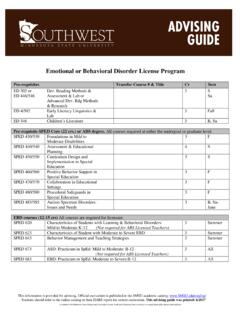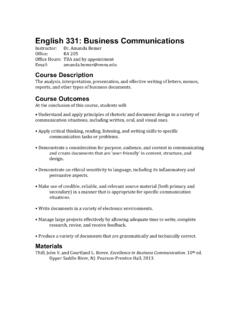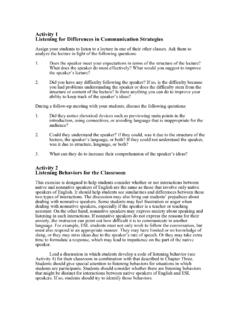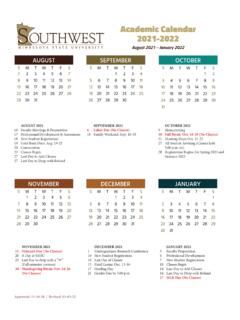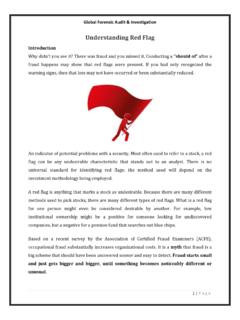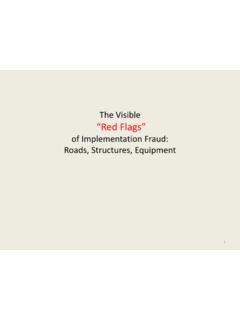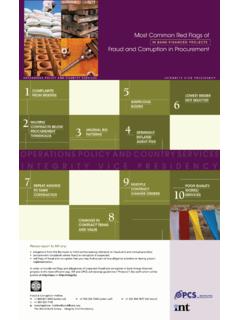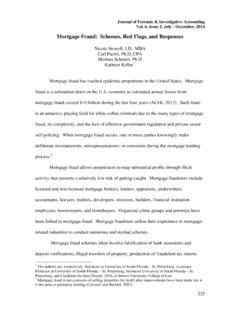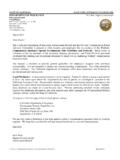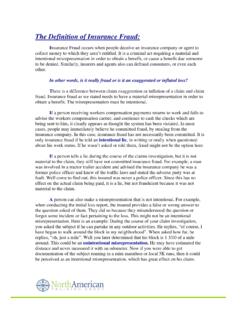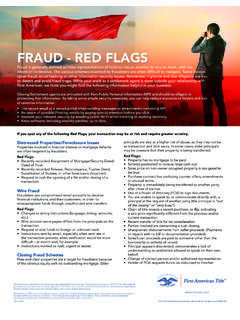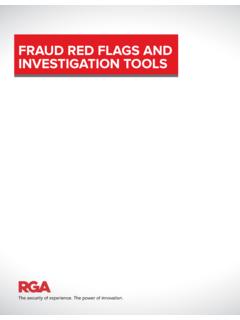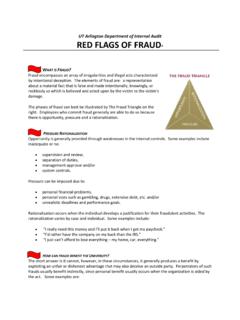Transcription of RED FLAGS IDENTITY THEFT PREVENTION PROGRAM
1 1 RED FLAGS IDENTITY THEFT PREVENTION PROGRAM I. PROGRAM AdoptionSouthwest Minnesota State University ( SMSU ) developed this IDENTITY THEFT PREVENTION PROGRAM ( PROGRAM ) pursuant to the Federal Trade Commission s ( FTC ) Red flag Rule, which implements Section 114 of the Fair and Accurate Credit Transactions Act of 2003. The Administration of SMSU determined that this PROGRAM was appropriate for SMSU and therefore approved this PROGRAM on May 13, 2010. Incorporated with this PROGRAM is the Minnesota State Colleges and Universities, Office of the Chancellor Guidelines IDENTITY THEFT PREVENTION PROGRAM which can be found at Definitions and flag Rule Definitions1) IDENTITY THEFT is a fraud committed or attempted using the identifying information ofanother customer without permission. 2) Identifying Information is any name or number that may be used, alone or inconjunction with any other information, to identify a specific customer.
2 Personal orconfidential information includes, but is not limited to, the following items whetherstored in electronic or printed format:a)Name (maiden name)b) Addressc)Telephone number(s)d) Social Security Number or taxpayer identification numbere)Student or employee identification numberf)Driver s licenseg)Alien registration or passport numberh) Customer numberi)Date of Birthj)Computer s Internet Protocol (IP) addressk) Banking information and routing numberl)Credit Card number and expiration )A Red flag is a pattern, practice or specific activity that indicates the possibleexistence of IDENTITY THEFT . 2 4)A Covered Account includes all student or employee ( customer ) accounts or loansthat are administered by the ) PROGRAM Administrator is the individual designated with primary responsibility foroversight of the requirement of the Red flag RulesUnder the Red flag Rule, SMSU is required to establish an Identify THEFT PREVENTION PROGRAM tailored to its size, complexity, and nature of its operation.
3 Each PROGRAM must contain reasonable policies and procedures to: 1) Identify patterns, practices, or specific activities ( Red FLAGS ) for new and existingcovered accounts that indicate the possible existence of IDENTITY THEFT with regard to newor existing covered account;2) Detect Red FLAGS that have been incorporated into the PROGRAM ;3) Respond appropriately to any Red FLAGS that are detected to prevent and mitigate IdentifyTheft;4) Ensure that the PROGRAM is updated periodically to reflect changes in risks to customers orto the safety and soundness of the customer from IDENTITY THEFT ; and5) Promote compliance with state and federal laws and regulations regarding IDENTITY AccountsSMSU has identified various types of accounts that fall within the definition of a covered account as set forth below: 1) Federal Loans (such as the Perkins Loan PROGRAM )2) Student Short Term Loans3) Student Accounts4) Employee of Red FlagsIn order to identify relevant Red FLAGS , SMSU considers the types of accounts it offers and maintains, methods it provides to open its accounts, methods it provides to access its accounts, and its previous experiences with IDENTITY THEFT .
4 The following Red FLAGS are potential indicators 3 of fraud . Any time a Red flag , or a situation closely resembling a Red flag is apparent, it should be investigated for verification. and Warnings from Credit Reporting AgenciesRed Flags1) Notice or report from a credit agency of a credit freeze on an applicant;2) Notice or report from a credit agency of an active duty alert for an applicant; and3) Receipt of Notice of Dispute from a credit DocumentsRed Flags1) Identification document or card that appears to be forged, altered or inauthentic;2) Identification document or card on which a customer s photograph or physicaldescription is not consistent with the customer presenting the document;3) Other document with information that is not consistent with existing student or employeeinformation.
5 Personal Identifying InformationRed Flags1) Identifying information presented that is inconsistent with other information the customerprovides (example: inconsistent birth dates);2) Identifying information presented that is inconsistent with other sources of information(for instance, an address not matching an address on a loan application);3) Identifying information presented that is the same as information shown on otherapplications that were found to be fraudulent;4) Identifying information presented that is consistent with fraudulent activity (such as aninvalid phone number or fictitious billing address);5) Social security number presented that is the same as one given by another customer;6) An address or phone number presented that is the same as that of another customer;4 7)A customer fails to provide complete personal identifying information on an applicationwhen reminded to do so; and8)A customer s identifying information is not consistent with the information that is on filefor the Covered Account Activity or Unusual Use of AccountRed Flags1) Change of address for an account followed by a request to change the customer s name;2) Payments stopped on an otherwise consistently up-to-date account;3) Account used in a way that is not consistent with prior use;4) Mail sent to the customer is repeatedly returned as undeliverable;5) Notice to the University that a customer is not receiving mail sent by the University.
6 6) Notice to the University that an account has unauthorized activity;7) Breach in the University's computer system security; and8) Unauthorized access to or use of a customer s account from OthersRed Flag1) Notice to the University from a student, employee, IDENTITY THEFT victim, lawenforcement or other customer that the University has opened or is maintaining afraudulent account for a customer engaged in IDENTITY Red EnrollmentIn order to detect any of the Red FLAGS identified above associated with the enrollment of a student, University personnel will take the following steps to obtain and verify the IDENTITY of the customer opening the account: 1) Require certain identifying information such as name, date of birth, academic records,home address or other identification; and5 2)Verify the student s IDENTITY at time of issuance of student identification card (review ofdriver s license or other government-issued photo identification).
7 AccountsIn order to detect any of the Red FLAGS identified above for an existing Covered Account, University personnel will take the following steps to monitor transactions on an account: 1) Verify the identification of the customer if they request information (in customer, viatelephone, via facsimile, via email);2) Verify the validity of requests to change billing addresses by mail or email and providethe customer a reasonable means of promptly reporting incorrect billing address changes;and3) Verify changes in banking information given for billing and payment Hard CopyAll personnel shall comply with the following requirements: 1) File cabinets, desk drawers, overhead cabinets, and any other storage space containingdocuments with confidential information must be locked when not in )Storage rooms containing documents with confidential information and record retentionareas must be locked at the end of each workday or when ) Desks, workstations, work areas, printers and fax machines, and common shared work areasmust be cleared of all documents containing confidential information when not in )
8 Records may only be destroyed in accordance with retention policy and applicable information must be destroyed in a secure and Mitigating IDENTITY TheftIn the event University personnel detect any identified Red FLAGS , such personnel shall take one or more of the following steps, depending on the degree of risk posed by the Red flag : and Mitigate1) Continue to monitor a Covered Account for evidence of IDENTITY THEFT ;2) Change any passwords or other security devices that permit access to Covered Accounts;3) Notify the Red flag Coordinator for determination of the appropriate step(s) to take;6 4) The Red flag Coordinator may determine the need to provide the customer with a newidentification ) The Red flag Coordinator may notify law enforcement; and6) Determine that no response is warranted under the particular Identifying InformationIn order to further prevent the likelihood of IDENTITY THEFT occurring with respect to Covered Accounts, the University will take the following steps with respect to its internal operating procedures to protect identifying information: 1) Ensure that its website is secure or provide clear notice that the website is not secure;2) Ensure complete and secure destruction of paper documents and computer filescontaining account information when a decision has been made to no longer maintainsuch information;3) Ensure that office computers with access to Covered Account information are passwordprotected;4) Avoid use of social security numbers;5) Ensure computer virus protection is up to date.
9 And6) Require and keep only the kinds of account information that are necessary for ProceduresIf an apparent victim of IDENTITY THEFT makes an appropriate request for information, the Red flag Coordinator shall supply the account or loan application and the business transaction records to the apparent victim. An appropriate request must be in writing: Complete the Red flag Incident Report Form and email or mail it to the Red flag Coordinator at: Email: Southwest Minnesota State University Office of Business Services, IL 139 1501 State Street Marshall, MN 56258 7 Before supplying the information to the victim, the Red flag Coordinator must require the victim to provide: 1) Proof of positive identification; and2) Proof of claim of IDENTITY theftPositive proof of identification is obtained using the current procedure.
10 Proof of an IDENTITY THEFT claim includes: 1) A copy of a police report evidencing the claim of the victim of IDENTITY THEFT ; and2) A properly completed copy of a FTC affidavit of IDENTITY PROGRAM AdministrationA. OversightResponsibility for developing, implementing and updating the PROGRAM lies with the Red flag Coordinator. The Red flag Coordinator will be responsible for ensuring appropriate training of University staff on the PROGRAM , for reviewing any staff reports regarding the detection of Red FLAGS and the steps for preventing and mitigating IDENTITY THEFT , determining which steps of PREVENTION and mitigation should be taken in particular circumstances and considering periodic changes to the PROGRAM . B. Staff Training and ReportsUniversity staff responsible for implementing the PROGRAM shall be trained either by or under the direction of the Red flag Coordinator in the detection of Red FLAGS and the responsible steps to be taken when a Red flag is detected.
